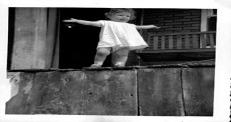“Lost” Arts
I have a hunch that I have addressed this before, but not lately, so here we go. At least once every week or two, I hear or read someone saying that one thing or another is a “lost art.” Normally what they are calling a lost art is something I know to be far from lost and, in fact, alive and well, and usually thriving. Most recently I have heard or read that quilting, embroidery, crochet, knitting, cooking from scratch, and baking from scratch are all lost arts. This makes me roll my eyes so hard.
One question in my mind as I type is why is it more the “domestic” arts that people think are lost and not the “fine” arts like drawing, painting, and sculpting? I am thinking that, like home economics, people assume all the “women’s work” disappeared when women, en masse, entered the work force. To be fair, there was a period of time—to the best of my memory from the late 80s to right about 2001–when, if you did any of the domestic arts, you did not say so in public, and you certainly DID NOT do them in public. Ask me how I know that when other people learned that you liked to cook, sew, embroider, knit, or crochet, they made a snide comment. Back in those days it was a point of pride among my generation of women that they never cooked a meal and would not even know where to start doing anything beyond pouring cereal out of a box or heating something in the microwave.
Did you notice that I gave a fairly specific end date to the domestic arts shaming era? I can be even more specific—the domestic arts shaming era ended on September 11, 2001. On that date, the world we had built up in our minds came crashing down with the towers. Life suddenly felt very chaotic, and people felt deeply unsettled, stunned, and dazed. People started looking for something to comfort them, something that could make them feel more settled, something to help them restore a sense of safety and equilibrium. The generation or two younger than me started reaching for things that reminded them of safe and settled homes and people in their lives, like their grandparents. They started knitting, crocheting, embroidering, quilting, cooking, sewing, and baking, for example. They, these young people, have kept at it, putting their own twist on those arts to the point that some seem to think they sort of invented them.
Twenty years later we had the pandemic, and once again found ourselves with the world as we knew it crashing down around us. Once again, people turned to the domestic arts for comfort, but also for very practical reasons this time. People bought sewing machines to make masks to the point that there was a six-month or more waiting list on many new machines. People started baking, cooking, gardening, keeping chickens, canning and preserving food—a seemingly infinite array of things that we thought we had left in the distant past. While I know many people stopped all those domestic arts as soon as they returned to school and work, I am hoping that there is a lingering interest in being capable and self-sufficient. I hope the joy of making beautiful things for your home or to wear does not get lost in the shuffle again. I think that for now at least, we can declare all those “lost” arts to be found again. SpringCreekArtsGuild@gmail.com

